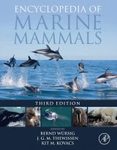About this book
Chordate Origins and Evolution: The Molecular Evolutionary Road to Vertebrates focuses on echinoderms (starfish, sea urchins, and others), hemichordates (acorn worms, etc.), cephalochordates (lancelets), urochordates or tunicates (ascidians, larvaceans and others), and vertebrates. In general, evolution of these groups is discussed independently, on a larger scale: ambulacrarians (echi+hemi) and chordates (cephlo+uro+vert). Until now, discussion of these topics has been somewhat fragmented, and Chordate Origins and Evolution provides a unified presentation of the essential information.
In the more than 150 years since Charles Darwin proposed the concept of the origin of species by means of natural selection, which has profoundly affected all fields of biology and medicine, the evolution of animals (metazoans) has been studied, discussed, and debated extensively. Following many decades of classical comparative morphology and embryology, the 1980s marked a turning point in studies of animal evolution, when molecular biological approaches, including molecular phylogeny (MP), molecular evolutionary developmental biology (evo-devo), and comparative genomics (CG), began to be employed. There are at least five key events in metazoan evolution, which include the origins of 1) diploblastic animals, such as cnidarians; 2) triploblastic animals or bilaterians; 3) protostomes and deuterostomes; 4) chordates, among deuterostomes; and 5) vertebrates, among chordates. The last two have received special attention in relation to evolution of human beings.
During the past two decades, great advances have been made in this field, especially in regard to molecular and developmental mechanisms involved in the evolution of chordates. For example, the interpretation of phylogenetic relationships among deuterostomes has drastically changed. In addition, we have now obtained a large quantity of MP, evo-devo, and CG information on the origin and evolution of chordates.
Contents
Chapter 1. Deuterostomes and chordates
Chapter 2. Hypotheses on chordate origins
Chapter 3. Fossil records
Chapter 4. Molecular phylogeny
Chapter 5. Comparative genomics of deuterostomes
Chapter 6. The Origins of Chordates
Chapter 7. The new organizers hypothesis for chordate origins
Chapter 8. The DV-axis inversion hypothesis: the embryogenetic basis for the appearance of chordates
Chapter 9. The enteropneust hypothesis and its interpretation
Chapter 10. The evolution of chordates: an extension of the new organizers hypothesis
Chapter 11. How did chordates originate and evolve?
Chapter 12 Summary and perspective
Customer Reviews
Biography
Noriyuki Satoh is a Professor of the Marine Genomics Unit, Okinawa Institute of Science and Technology, Graduate University, Okinawa, Japan. After obtaining a PhD at the University of Tokyo, he carried out research of developmental biology of tunicates at Kyoto University. Satoh and his colleagues have established Ciona intestinalis as a model organism of developmental biology, and he has also conducted research of developmental mechanisms involved in the origins and evolution of chordates. Dr. Satoh's group has also disclosed molecular mechanisms of notochord formation, and he is one of the leaders of the genome decoding projects of marine invertebrates, including tunicates, cephalochordates, and hemichordates.






















![Kame no Kōra wa Abarabone: Jintai de Arawasu Ugokumonozukan [Turtle Shells Have Ribs: A Picture Book of Animal Anatomy Represented by the Human Body]](http://mediacdn.nhbs.com/jackets/jackets_resizer_medium/24/249897.jpg?height=150&width=99)











